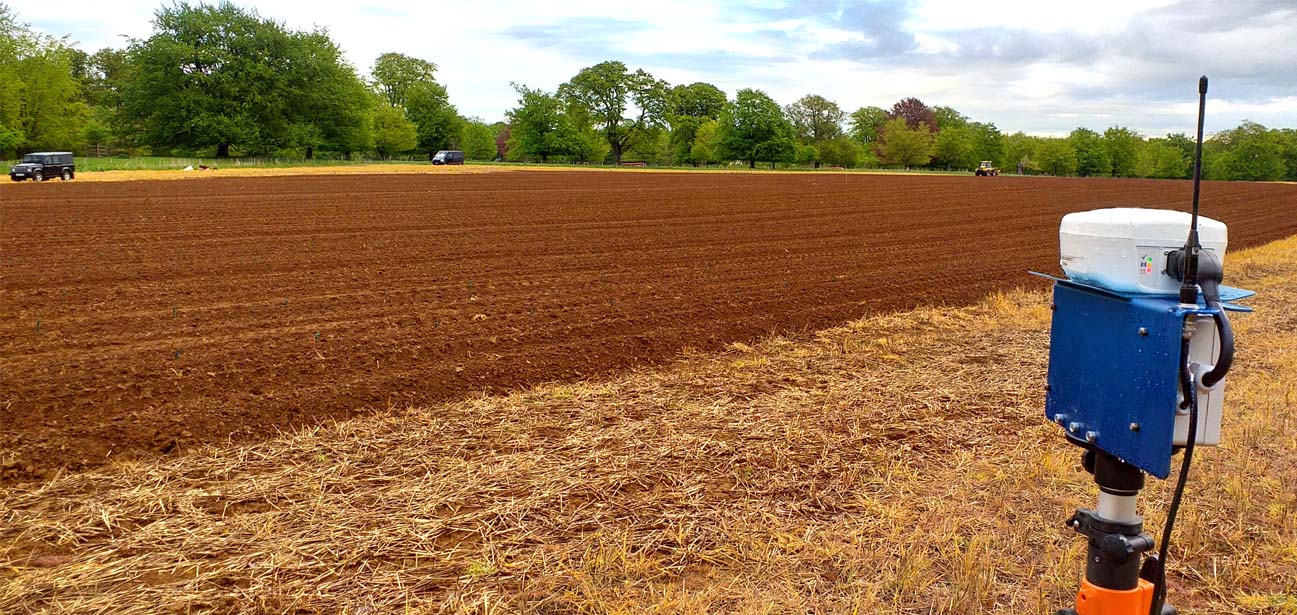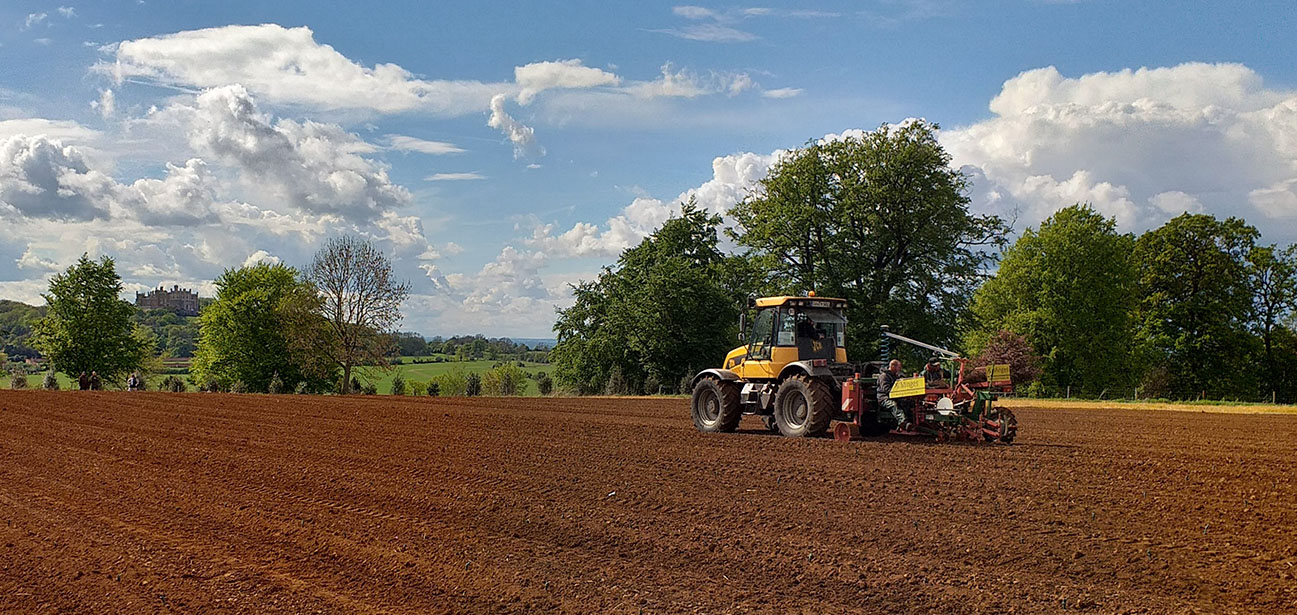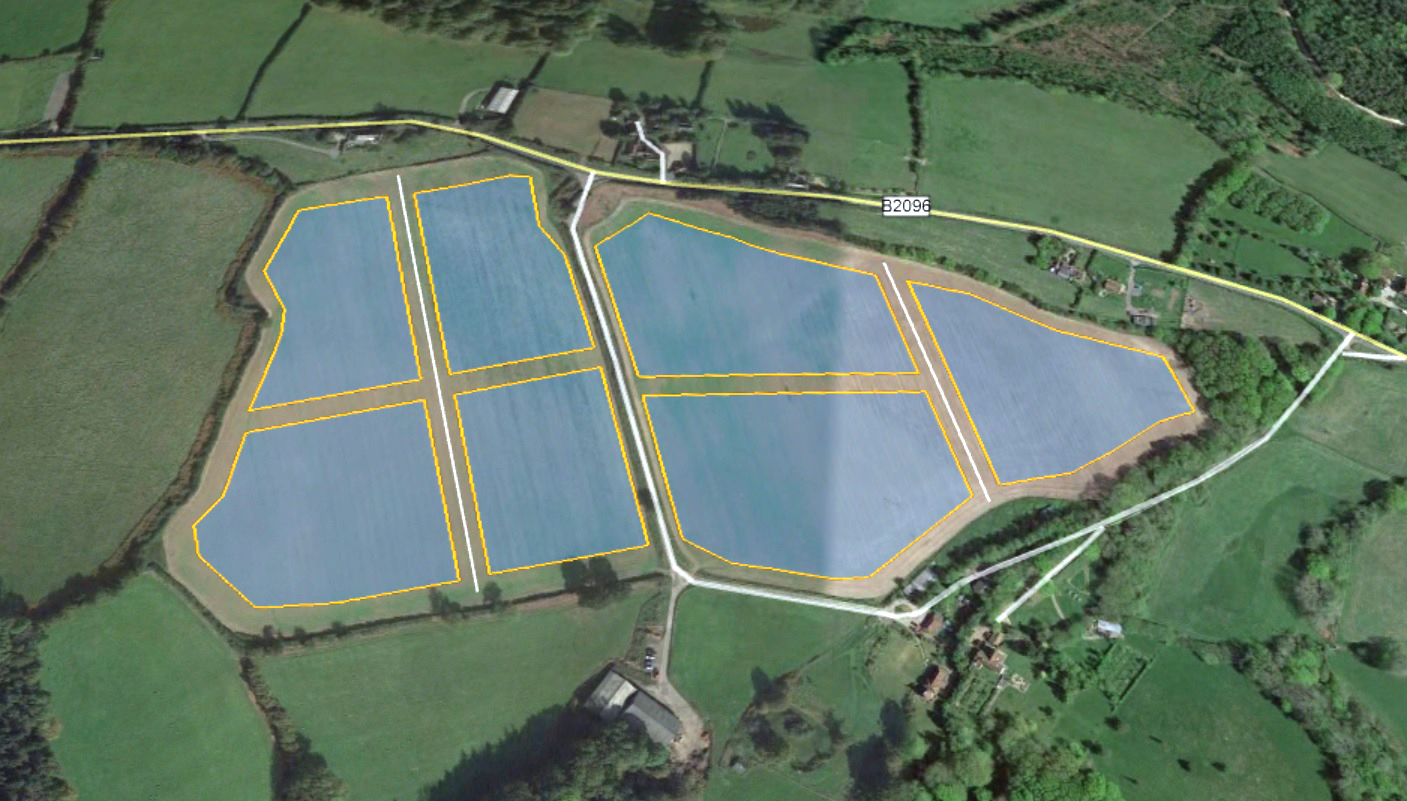How to design a vineyard.
A recent report from WineGB tells us that an estimated 3 million grapevines were planted this year. 1.6 million in 2018 and 1 million the year before that. Vine-Works Ltd have been at the forefront of this growth and have expanded to accommodate the requirement for professionally designed vineyards. We design vineyards following a checklist of requirements and the client’s business goals, but it all starts with one question – what will the grapes you grow be for?
Understanding what the grapes are ultimately destined for defines almost every decision in the design process. For example, a farmer diversifying their business by adding a new crop to their portfolio and growing grapes to sell on futures contracts or on the open market, may want long rows with large headlands and easy to manage square blocks. Less turns for tractors and the ability to use over row, trailered sprayers will increase the efficiency of vineyard operations.
A business started with the purpose of becoming a wine producing brand, building a winery, selling from a cellar door and running tours will have a very different approach to vineyard design. Blocks could be smaller with more variation in row length to follow existing features in the land. Lateral views of end posts could show pretty curves making the vineyard more aesthetically appealing to visitors.
An early consideration in the design process is land. Land value still holds steady and in recent years we have even seen a premium on land destined for a vineyard or land with significant positive attributes to plant grape vines. Whether buying land to pursue the planting of a vineyard or fortunate enough to already own the land, optimum utilisation of land is paramount.
The land that has been acquired or designated will most likely have a sloping aspect and natural undulation. Within cool climate wine production, it’s understood that rows following north-south orientations will allow for even canopy exposure to the sun and will not cast shadow on the neighbouring row. Not all fields in this country fall away directly to the south allowing for this standard approach to planting, sadly. If land slopes away to the south east or south west, then for practical purposes it makes sense to plant in that direction. For machinery operations and to negate the need for terracing, following the topography can be far more economical. Reducing frost is an important consideration during site selection but can also be addressed in where the rows start and finish. Leaving substantial cold air run-off areas or creating gaps in tree lines for it to escape can be crucial to avoiding damage to grapevines from spring frosts.
Headlands and windbreaks are an integral part of any vineyard design and are often overlooked or underestimated in their importance. There is a balance, however, between utilising plantable area and making it difficult for operators to turn their tractors.
Windbreaks can offer protection for vines and, spaced correctly, can also become useful side lands for vineyard traffic. What’s planted for windbreaks should be considered carefully otherwise they could harbour disease and pests.
The decision on how much space between rows and between the vines will come back to the initial question of what will happen to the fruit. This is where consideration must be given to the varietals being planted. Some varieties can benefit from more space between vines and others by being closer together. Vigour, phenolics and acidity can all potentially be managed with vine spacing. Also, provisions should be made in the design to match varieties to the warmest or coolest areas of the vineyard. If frost is a real concern for the site, then perhaps keep early budding varieties away from this area.
Our diverse and extensive experience in vineyard design has exposed our team to interesting and impressive projects. With the continuing expansion of vineyards in this country, we see more and more intricate designs to fit around private houses, newly purchased land and established businesses. Our designs always focus on why the fruit is being produced, then around existing site attributes and followed with improving and utilising land to its fullest potential.
New technologies are entering the market that allow us to perfect this design process further and its likely we will be using these to map as accurately as we can around soil profile and bedrock formations.
Whether the reason to start a vineyard is practical or emotive, design will be a small but important part of the process as what is ultimately
Writes Will Mower – Vine-works
www.vine-works.com | 01273 891777 | sales@vine-works.com







